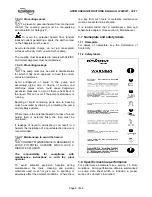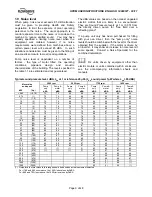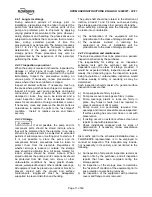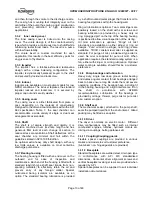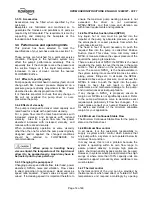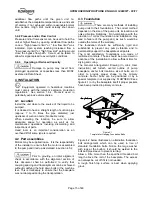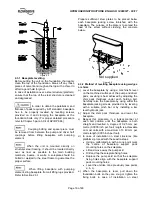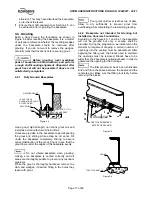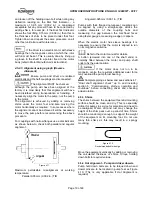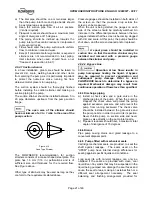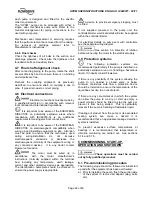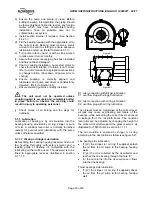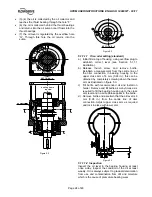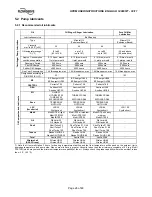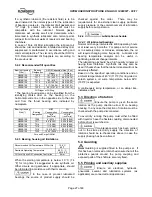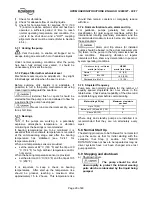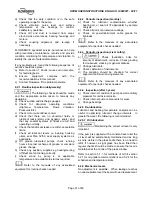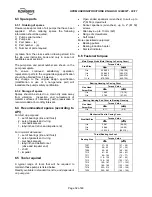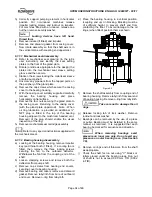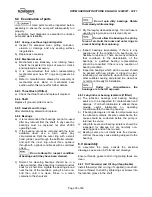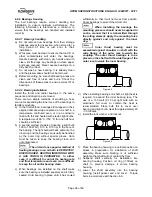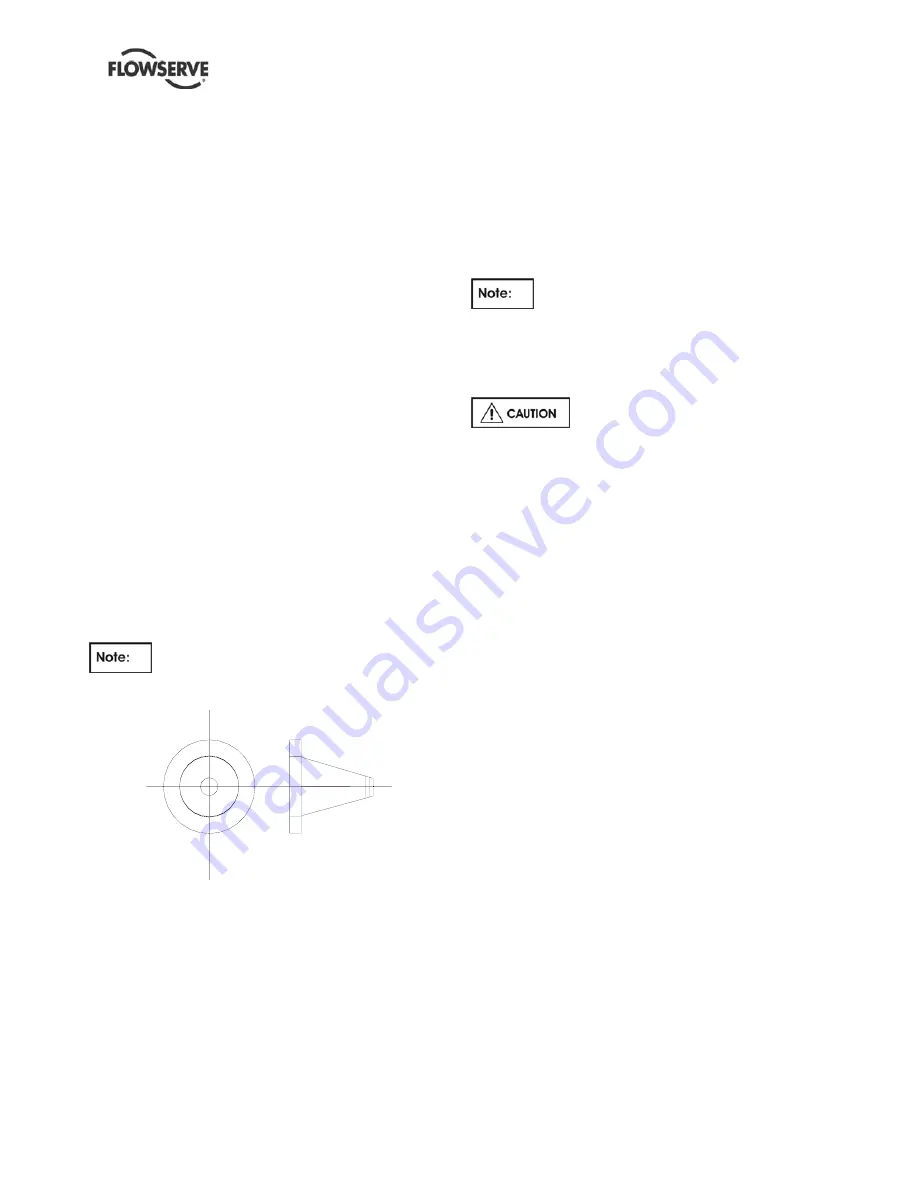
HPXM USER INSTRUCTIONS ENGLISH 14983571 - 03/11
Page 21 of 48
a) The inlet pipe should be one or two sizes larger
than the pump inlet bore and pipe bends should
be as large radius as possible.
b) Keep the suction pipe free of all air pockets.
(Vent is required).
c) Pipework reducers should have a maximum total
angle of divergence of 15 degrees.
d) The piping should be inclined up towards the
pump inlet with eccentric reducers incorporated
to prevent air locks.
e) Flow should enter the pump suction with uniform
flow, to minimise noise and wear.
f) Except if considerable foreign matter is expected
strainers are not recommended in inlet piping.
Inlet strainers, when used, should have a net
“free area” (see section 4.6.2.1)
4.6.2.1 Suction strainer
In a new installation, great care should be taken to
prevent dirt, scale, welding beads and other items
from entering the pump, as it is particularly important
to protect the numerous close running fits from
abrasive matter present in new piping
The suction system should be thoroughly flushed
before installing the suction strainer and making up
suction piping to the pump.
The suction strainer should be installed between 5 to
20 pipe diameters upstream from the pump suction
flange.
The open area of the strainer should
have a minimum of a 3 to 1 ratio to the area of the
pump suction.
Figure 4.14
Cone Type Strainer
The FLOWSERVE recommendation for suction
strainers consists of a conical shaped steel plate. The
plate has 1.6 mm (1/16 in.) perforations and is of
sufficient size and thickness for the required flow.
See Figure above.
Other type of strainers may be used as long as they
conform to the requirements stated above.
Pressure gauges should be installed on both sides of
the screen so that the pressure drop across the
screen can be measured.
When the unit is being started, the gauges on each
side of the screen should be carefully watched. An
increase in the differential pressure between the two
gauges indicates that the screen is becoming clogged
with dirt and scale. At this point, the pump should be
shut down, and the screen cleaned and/or replaced.
A spool piece should be installed in
suction line so that the suction strainer may be
installed and removed with a pressure gauge
between the strainer and pump.
4.6.2.2 Bypass Line
Operation at low flows results in
pump horsepower heating the liquid. A bypass
may be required to prevent vaporisation and
subsequent pump damage. Refer to local
FLOWSERVE branch to determine if a bypass is
required. Mechanical damage may result from
continuous operation at flows less than specified.
4.6.3 Discharge piping
a)
Install a check valve and a gate valve in the
discharge pipe of the pump. When the pump is
stopped, the check valve will protect the pump
against excessive pressure and will prevent the
pump from running backward. The check valve
should be installed between the gate valve and
the pump nozzle in order to permit its inspection.
Never throttle pump on suction side and never
place a valve directly on the pump inlet nozzle.
b) Pipework reducers should have a maximum total
angle of divergence of 15 degrees.
4.6.4 Drains
Pipe pump casing drains and gland leakage to a
convenient disposal point.
4.6.5 Pumps fitted with mechanical seals
Cartridge mechanical seals are provided, to seal the
shaft against leakage. The seals used on the
"HPXM" pump have internal design differences for
sealing against specific liquids and conditions.
Long seal life with minimal leakage can only be
obtained if the seals are provided with clean, cool
liquid. Even tiny solids that may be suspended in the
liquid being pumped can damage the seal faces and
cause the seal to leak, making an external flush or a
different seal arrangement necessary. The seal
balancing and flushing arrangement provided for


